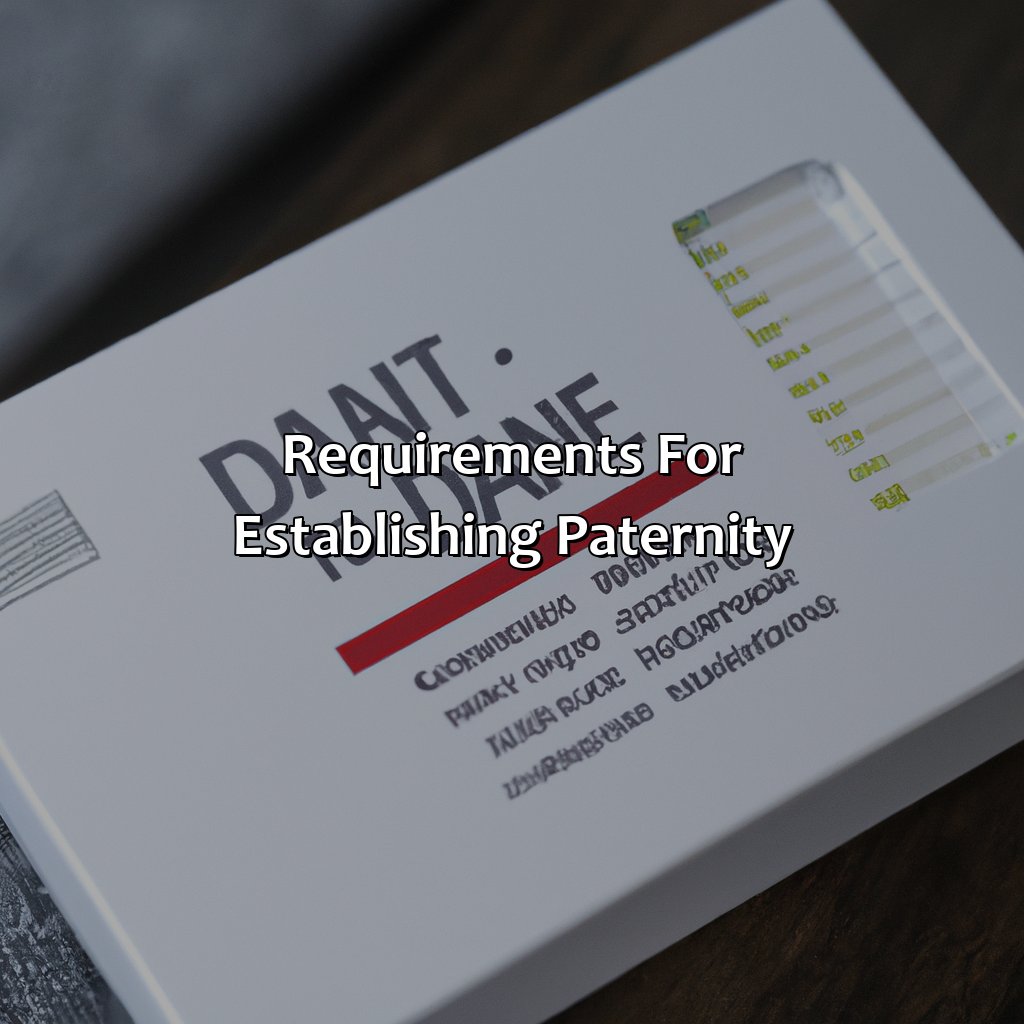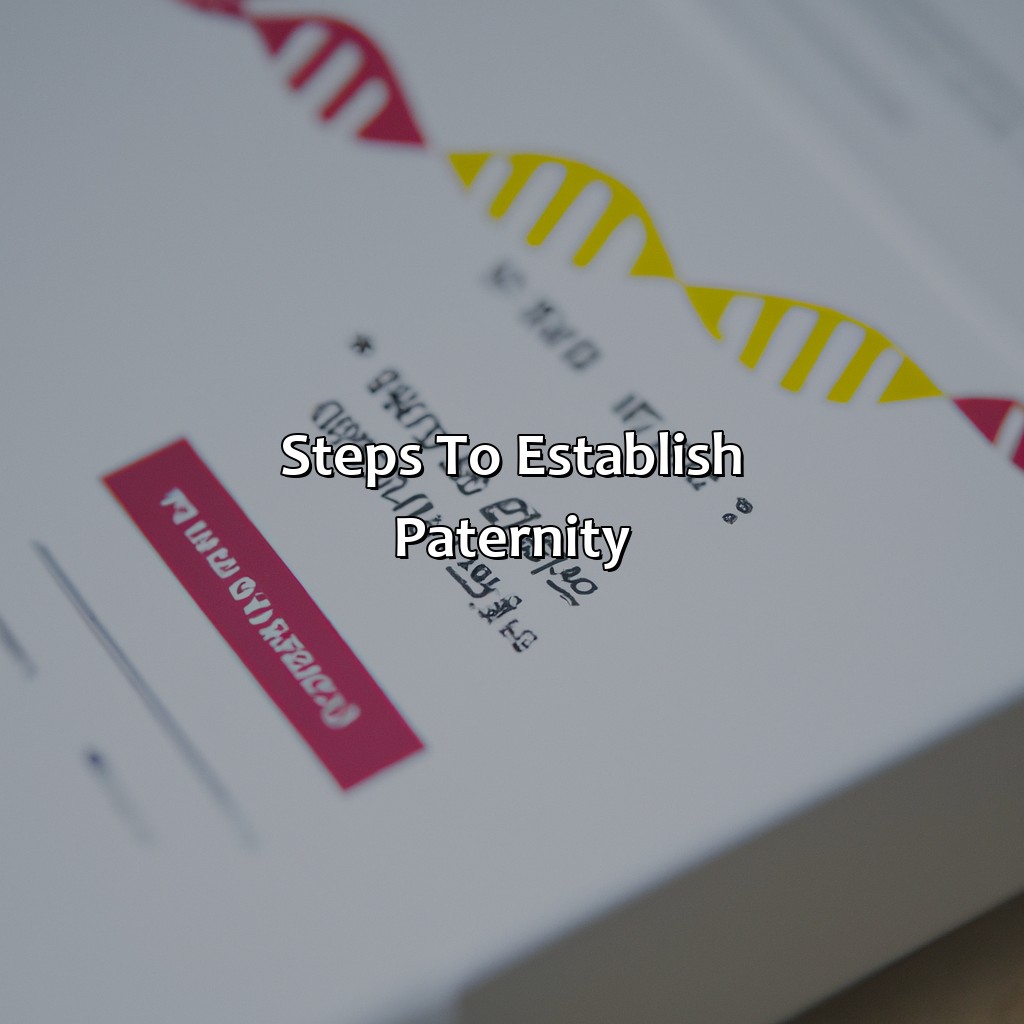How To Establish Paternity For Social Security Survivor Benefits?
Key Takeaway:
- Establishing paternity is crucial for qualifying for Social Security survivor benefits. This involves confirming the biological connection between a child and the deceased parent.
- There are several ways to establish paternity, including providing biological evidence, relying on the legal presumption of paternity, or voluntarily acknowledging paternity.
- The steps to establishing paternity may involve obtaining a court order, completing a voluntary acknowledgment of paternity, undergoing DNA testing, and filing an application for Social Security survivor benefits.
Are you looking for ways to prove the paternity of a deceased family member so you can receive Social Security Survivor benefits? This article provides a comprehensive guide for establishing paternity. You’ll learn the important steps to take for securing these essential benefits.
Establishing Paternity for Social Security Survivor Benefits
Understanding paternity is key to set up social security survivor benefits. Let’s dig into the biological and legal aspects of paternity. Why is it necessary to establish paternity? What are the rewards? And, how do we establish it? All these questions will be answered!

Image credits: retiregenz.com by David Jones
Understanding Paternity
To comprehend the legitimacy of paternity in relation to social security survivor benefits, it is important to understand the legal recognition of fatherhood. Paternity acknowledges the biological relationship between a father and child that grants them rights and responsibilities such as custody, visitation and support payments. Establishing paternity also allows a child to inherit from their father’s property and receive social security death benefits.
Determining paternity for social security purposes requires proper evidence such as a signed document from both parents acknowledging paternity, a court order or results from genetic testing. These methods help ensure that benefits are granted to eligible children, which may include stepchildren or adopted children depending on certain circumstances.
It is also possible to retroactively establish paternity even after the alleged father’s death by using DNA technology such as stored tissue samples or other biological specimens. This can provide conclusive proof of paternity where no other alternatives exist.
To attain social security survivor benefits for an eligible child, it is recommended that the alleged father complete an Acknowledgment of Paternity form with the state’s vital records office before his death. Alternatively, if he passed away before this could be done, the mother or legal representative should contact Social Security Administration (SSA) who will use DNA testing or circumstantial evidence like hospital records demonstrating birth if available to evaluate claims.
Establishing paternity for social security survivor benefits can be complicated but having proper documentation and supporting evidence can make all the difference in securing benefits for eligible children who depend on them most. Proving who’s your daddy just got a whole lot more complicated: the requirements for establishing paternity.
Requirements for Establishing Paternity
Establishing paternity is necessary to get Social Security survivor benefits.
To do this, you can use biological evidence, legal presumption and voluntary acknowledgment. Let’s look at the advantages of each one.

Image credits: retiregenz.com by Joel Jones
Biological Evidence
Establishing paternity through genetic proof is a necessary requirement for acquiring social security survivor benefits. This evidence can be obtained via DNA testing, which provides accurate results that determine biological relations between individuals.
The test needs to examine specific regions of DNA that are inheredited from the father. If these regions match an established baseline inherited from the mother and deceased father, it confirms paternity.
Paternity tests are non-invasive, requiring only buccal swab samples from inside the cheeks. This simple procedure is cost-efficient and offers highly accurate results, making it a reliable choice for establishing paternity.
When establishing paternity for social security survivor benefits, gathering biological evidence is crucial in providing legitimate claims. DNA testing is useful because of its efficiency and accuracy in determining paternity.
Pro tip: If you want to be legally presumed the father, maybe skip the Maury-style drama and just take a DNA test.
Legal Presumption of Paternity
Establishing paternity through legal presumption helps determine the biological relationship between a father and child. This presumption grants presumptive fathers rights and obligations to the child, including social security survivor benefits. Paternity can be presumed if the father is listed on a birth certificate or has provided financial support to the child.
Under legal presumption of paternity, fathers who have established paternity are granted rights such as custody, visitation, and involvement in important decision-making. They also have an obligation to provide financial support to their children. In cases where paternity is disputed or unclear, genetic testing may be necessary to establish it.
It’s important to establish paternity early so that children can develop strong relationships with their fathers while also receiving necessary support and benefits. Research has shown that when fathers are involved in their children’s lives, they tend to perform better academically and emotionally.
According to Social Security Administration guidelines, a child is entitled to social security survivor benefits if they meet certain requirements, including being under age 18 or disabled before age 22, and meeting the definition of dependent on the deceased parent’s earnings record.
Don’t wait until your next family reunion to acknowledge paternity – do it voluntarily and save yourself the awkwardness.
Voluntary Acknowledgment
Through the Voluntary Acknowledgment process, a father can establish legal paternity of his child without the need for court involvement. This involves signing a legal document affirming his relationship to the child. It is typically used when both parents are in agreement about paternity and wish to avoid lengthy legal proceedings.
The document is issued by the state’s Vital Statistics Office or similar agency and may be signed at the hospital after the birth of the child or at a later designated location. Both parents must sign in front of a notary public or other authorized witness. Once filed with the relevant agency, it becomes a legally binding document.
It is important to note that if there is any doubt or dispute over paternity, this process may not be appropriate. In such cases, seeking assistance from an attorney or court may be necessary to legally establish paternity.
In some states, there may also be a time limit for acknowledging paternity through this process. It is important to research and understand local laws before proceeding.
Historically, establishing paternity could only be done through court proceedings, which often took considerable time and expense. The availability of voluntary acknowledgment provides an expedited way for fathers to establish their legal relationship with their children.
Unleash your inner gumshoe and follow these steps to prove you’re the daddy (or not)!
Steps to Establish Paternity
To gain social security survivor benefits, follow these steps:
- Get a court order.
- Do voluntary acknowledgment of paternity.
- Get a DNA test.
- Then, apply for the benefits.

Image credits: retiregenz.com by Joel Arnold
Getting a Court Order
When it comes to asserting one’s parental rights for social security survivor benefits, obtaining a legal order is an important step. This can be done by filing a paternity action or a support petition and requesting the court to determine paternity. The court may order genetic testing if necessary to establish or negate the biological relationship between the child and the alleged father.
Once a court order has been obtained establishing paternity, it should be submitted to the Social Security Administration (SSA) along with other required documents. The SSA will then update their records and provide the appropriate survivor benefits to eligible family members in case of death or disability of the wage earner.
It is crucial to note that failure to take this step could result in valuable benefits being denied, leaving children without financial support they are entitled to receive. It is advisable to consult a qualified attorney for guidance through this process and ensure that all legal requirements are met effectively.
Signing away your bachelorhood just got a whole lot more serious with completing the Voluntary Acknowledgment of Paternity.
Completing Voluntary Acknowledgment of Paternity
Establishing paternity is crucial to social security survivor benefits, and completing the voluntary acknowledgment of paternity form is the first step. This form must be signed by both parties voluntarily and with appropriate witnesses present. The document legally establishes the father’s identity, making him responsible for providing child support, including any legal rights associated with being a parent.
To complete the Voluntary Acknowledgment of Paternity process, each party involved must confirm that they understand what it means to sign this form. They should also acknowledge that they are not under undue pressure to sign it or actions resulting from divorce or separation during or after their relationship. Additionally, if one party has reservations about signing the form, they should seek proper legal advice before doing so.
It’s essential to know that once paternity is established correctly, there is no legal recourse for revoking it except through DNA testing in court. Therefore, parental acknowledgment means a long-term commitment to taking responsibility as a parent.
Recently in California State, Albert III was battling for recognition as his late father’s son, who passed away at 74 years old without an estate plan in place. Through DNA evidence gathered by forensic experts hired by lawyers on Albert III’s behalf and filed with the Los Angeles Superior Court confirmation papers for Albert Hamilton Newman Jr., he was successful in proving his biological connection to his father posthumously. With limited time left on the statute of limitations period approaching quickly, Albert III can now receive social security survivor benefits under his father’s records as proven legitimate offspring of his late father’s lifelong legacy.
Nothing says family bonding like spitting in a tube and shipping it off for a DNA test.
DNA Testing
The process of establishing paternity can be determined with a genetic DNA test. This test enables one to determine biological relationships by comparing genetic markers across different samples. Using this method, the social security administration can ensure that the correct individuals are receiving survivor benefits.
To conduct a DNA test, potential fathers, mothers and children must provide blood, saliva or tissue samples for analysis. The genetic data obtained from these samples is then cross-checked to determine biological relatedness. It’s important to note that there are several types of tests available and consulting with a medical professional is recommended.
If an individual is seeking survivor benefits for a child from a parent who has passed away, establishing paternity through DNA testing is crucial to confirm eligibility. Additionally, if there are questions about paternity in family situations like adoption or surrogacy, DNA testing can be used as a tool for determining legal rights.
Pro Tip: It’s important to have all parties involved agree to undergo DNA testing prior to initiating the process since it may affect familial relationships and legal matters.
Surviving the paperwork for social security survivor benefits is like trying to establish paternity after a drunken one-night stand.
Filing an Application for Social Security Survivor Benefits
When seeking social security survivor benefits, it is crucial to file an application with the proper documentation. This process involves several necessary steps to establish eligibility and claim the benefits rightfully due.
Here is an informative 4-step guide on filing an application for social security survivor benefits:
- Collect Required Documents: Gather necessary documents, including personal identification, birth and death certificates, marriage license, tax returns.
- Fill Out Application: Complete the SSA-8 form required for survivor benefits by providing personal information and specific details about the deceased individual’s employment history.
- Submit Application: Submit your completed application along with all relevant supporting documents to your local Social Security Administration office or through the online portal.
- Await Response: Wait patiently for a response from the Social Security Administration as officials verify your information and determine your eligibility for survivor benefits.
It’s important to note that establishing paternity can provide additional rights to claim survivor benefits. Speak with a representative from the Social Security Administration if you have questions regarding paternity establishment.
It’s worth mentioning that according to research conducted by AARP, only 44% of Americans over age 50 have prepared necessary estate planning documents like wills or trusts.
Five Facts About How To Establish Paternity For Social Security Survivor Benefits:
- ✅ A child is entitled to Social Security Survivor Benefits if their father is deceased. (Source: Social Security Administration)
- ✅ Establishing paternity is necessary for a child to receive Social Security Survivor Benefits from their father’s record. (Source: Social Security Administration)
- ✅ Paternity can be established voluntarily through a written agreement between the child’s mother and father. (Source: LegalZoom)
- ✅ Paternity can also be established through DNA testing if it is necessary to prove biological paternity. (Source: LegalMatch)
- ✅ If paternity cannot be established, the child may still be eligible for benefits through other means, such as through the mother’s record or under special circumstances. (Source: Disability Advisor)
FAQs about How To Establish Paternity For Social Security Survivor Benefits?
How to establish paternity for social security survivor benefits?
What is paternity?
Paternity refers to the legal recognition of a biological father. In case of social security survivor benefits, it establishes the eligibility of a child to receive these benefits.
What documents are required to establish paternity for social security survivor benefits?
The documents required to establish paternity for social security survivor benefits include the child’s birth certificate, the mother’s and father’s proof of identity, and a court order or paternity affidavit.
What is a paternity affidavit?
A paternity affidavit is a legal document that is used to establish paternity without the need for a court order. It is typically signed by both parents and must be notarized.
What is the process of establishing paternity for social security survivor benefits?
The process of establishing paternity for social security survivor benefits typically involves submitting the required documentation to the Social Security Administration (SSA) and providing evidence of paternity, such as a DNA test or paternity affidavit.
Can paternity be established after the death of the biological father?
Yes, paternity can be established after the death of the biological father. However, the process may be different and may require additional documentation. It is best to consult with a legal professional or the SSA for guidance.
